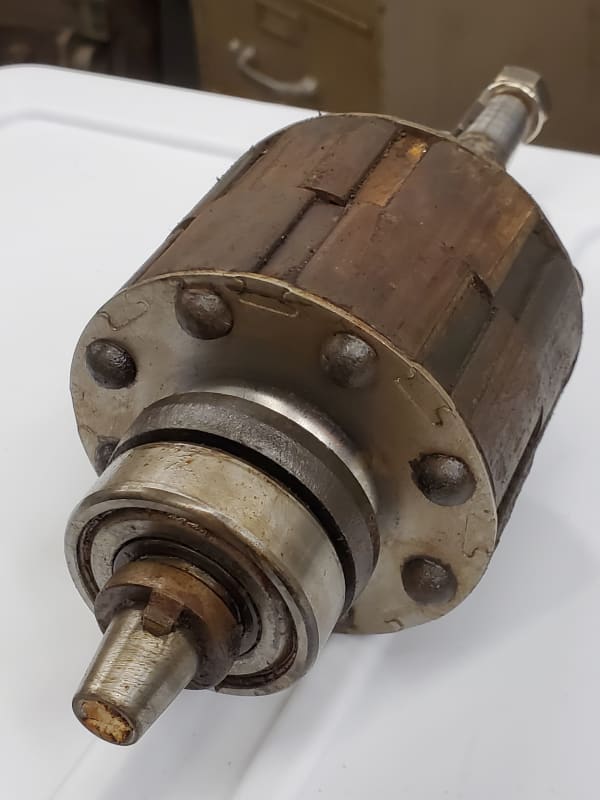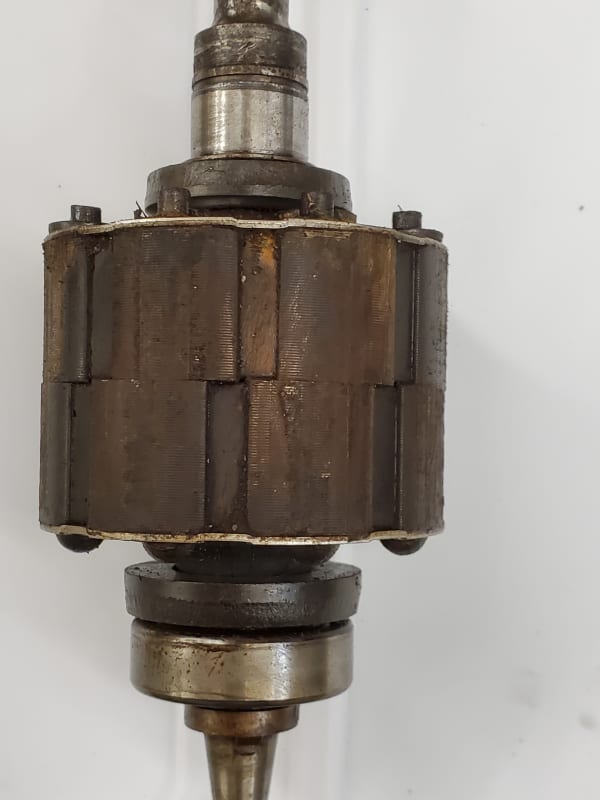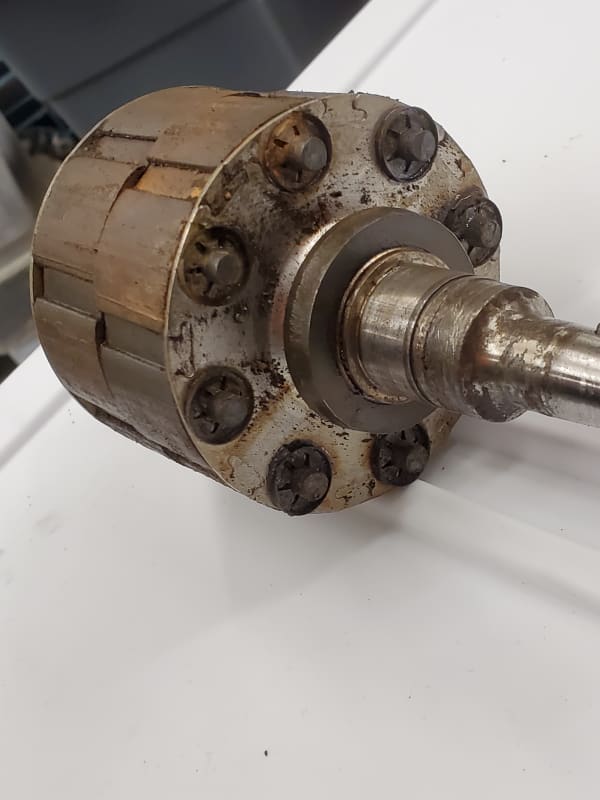LowEnergyParticle
Electrical
- Feb 14, 2002
- 13
The three images below show the rotor of a Fanuc Servo Motor Model O, Type A06B-0513-B002, originally built in 1987. I do not know what material the permanent magnets are made of, but I don't think the rare earth magnets were in wide commercial use yet in 1987. As you'd expect, the raised steel pole pieces alternate north and south around the circumference of the rotor, for a total of 4 pole pairs.
The servo motor had taken pretty severe mechanical damage, and I opened it up to repair it (cleaning, seals, bearings, and encoder). Shortly after pulling the rotor out from the stator, I remembered that some (not all) pre-rare-earth rotors would demagnetize when they were removed from their stators without a keeper installed. I'm hoping that the end plates shown bolted through the pole pieces suffice for a keeper, but I don't know for sure.
Can someone tell from the pictures below if I can continue on with the rebuild and installation, or have I demagnetized the rotor and need a new servo motor ($$$)? I don't have the information or equipment to remagnetize the rotor; if I've damaged it I'm up the proverbial creek.
Thank you very much for looking at my problem!
Dave



The servo motor had taken pretty severe mechanical damage, and I opened it up to repair it (cleaning, seals, bearings, and encoder). Shortly after pulling the rotor out from the stator, I remembered that some (not all) pre-rare-earth rotors would demagnetize when they were removed from their stators without a keeper installed. I'm hoping that the end plates shown bolted through the pole pieces suffice for a keeper, but I don't know for sure.
Can someone tell from the pictures below if I can continue on with the rebuild and installation, or have I demagnetized the rotor and need a new servo motor ($$$)? I don't have the information or equipment to remagnetize the rotor; if I've damaged it I'm up the proverbial creek.
Thank you very much for looking at my problem!
Dave



